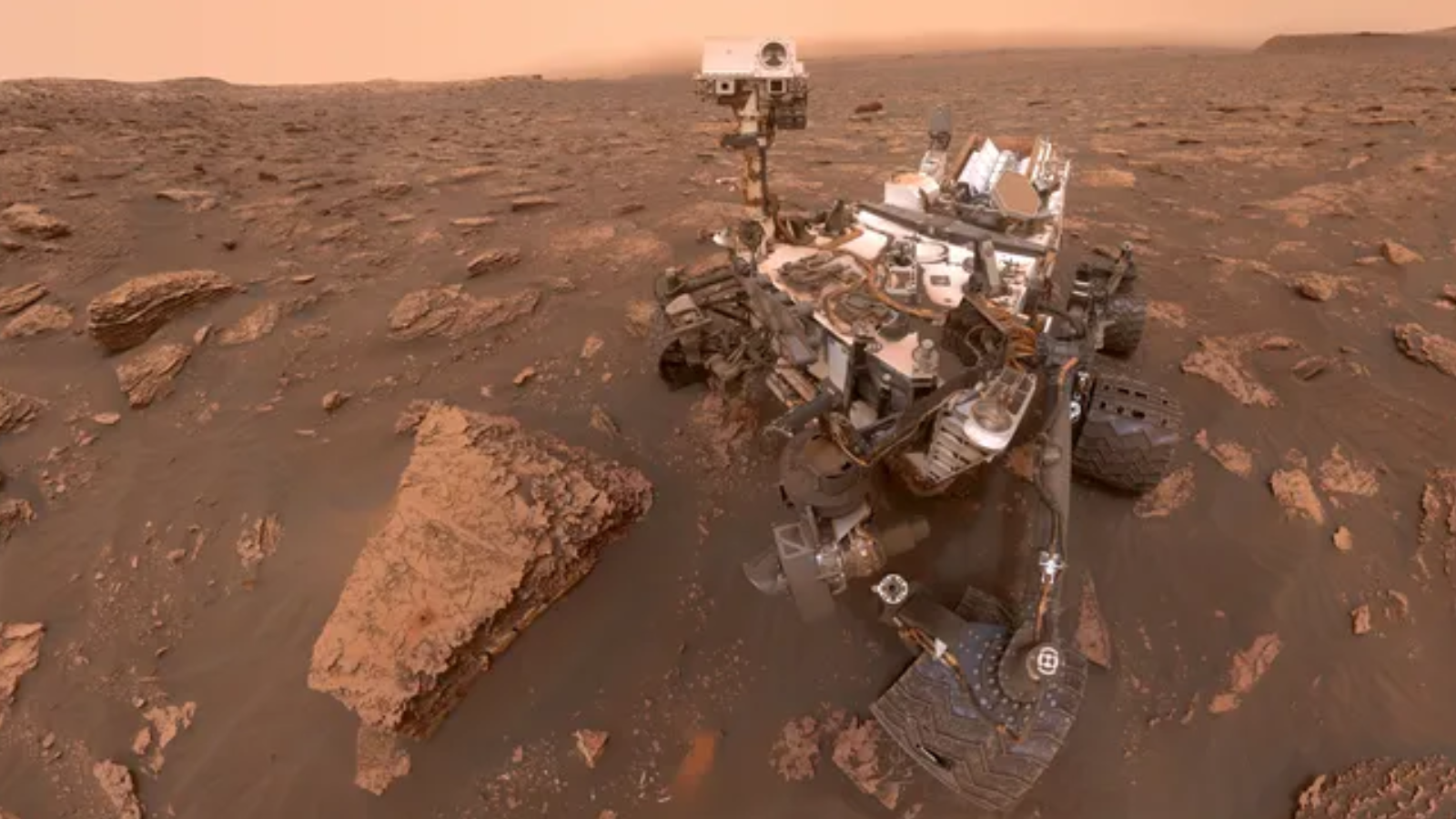NASA's Curiosity rover films from dawn to dusk on Mars during downtime (video)
The rover doubled as sundial during half a Red Planet day.
NASA's Mars rover Curiosity had some downtime during November. But rather than resting on its laurels, the robot filmed stunning footage of dawn to dusk on Earth's neighboring planet.
Curiosity filmed two black-and-white videos on Nov. 8 during what was the 4,002nd Martian day, or sol, of its mission. (A sol is a little longer than Earth's day of 24 hours.) The downtime for Curiosity during its search for life was necessitated by Mars passing around the opposite side of the sun to Earth.
During these periods, called Mars solar conjunctions, ground control operators cease sending messages to robots on the Red Planet because solar plasma can interfere with these commands, though the missions do still send regular "health checks" back to Earth.
Related: Curiosity rover on Mars gets a brain boost to think (and move) faster
This year, the Mars fleet was incommunicado for two weeks, from Nov. 11 to 25, with the last instruction received by Curiosity telling the robot to start filming its surroundings with its two Hazard-Avoidance Cameras (HazCams).
These cameras are usually used to identify spot rocks, slopes, and other hazards that may be risky for Curiosity to traverse, but while the rover is paused, they can be put to other uses.
During the footage, consisting of 12 hours worth of snapshots collected over the 24 hours, 37 minutes, and 22-second Martian day between 5:30 a.m. to 5:30 p.m. local time, the shadow of the Curiosity can be seen drifting over the Martian surface, with the robot effectively serving as a rudimentary sundial.
Breaking space news, the latest updates on rocket launches, skywatching events and more!
The Curiosity ground team had been hoping to see Martian clouds or dust devils blow across the surface of the Red Planet in the 25-frame videos, but notable weather was absent from the footage.
The video does show a valley carved into Mount Sharp or Aeolis Mons, the 3-mile (5-kilometer) mountain in the Gale Crater region of the Red Planet. Curiosity has been exploring the region since its landing in 2012 and remains in good health.

Robert Lea is a science journalist in the U.K. whose articles have been published in Physics World, New Scientist, Astronomy Magazine, All About Space, Newsweek and ZME Science. He also writes about science communication for Elsevier and the European Journal of Physics. Rob holds a bachelor of science degree in physics and astronomy from the U.K.’s Open University. Follow him on Twitter @sciencef1rst.

